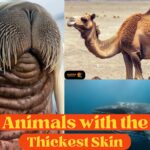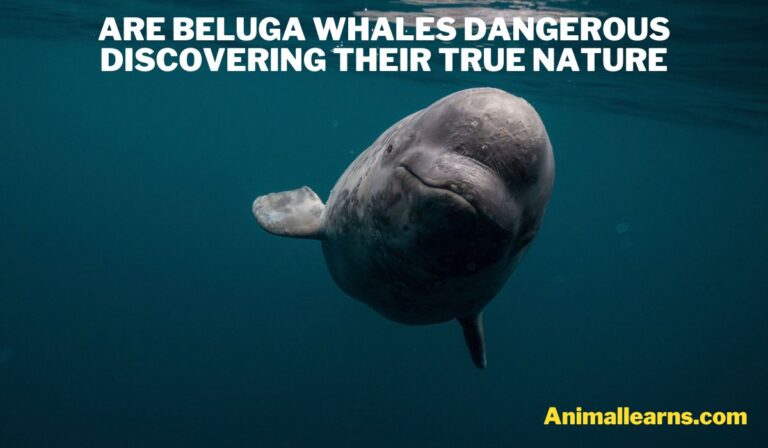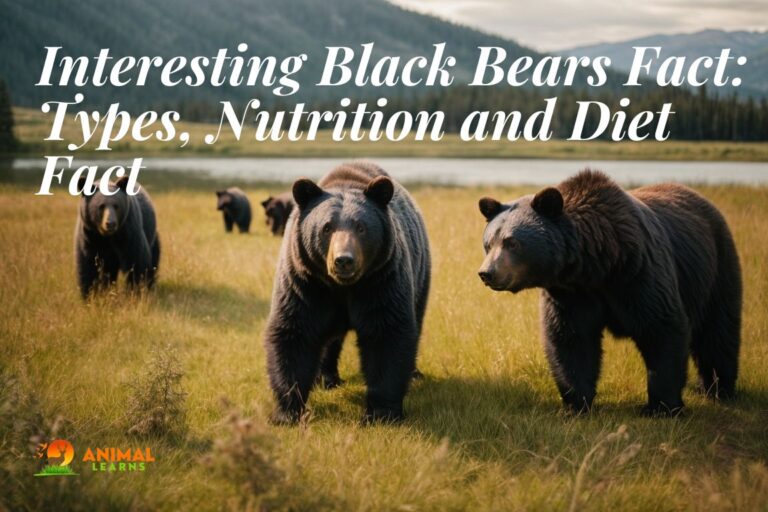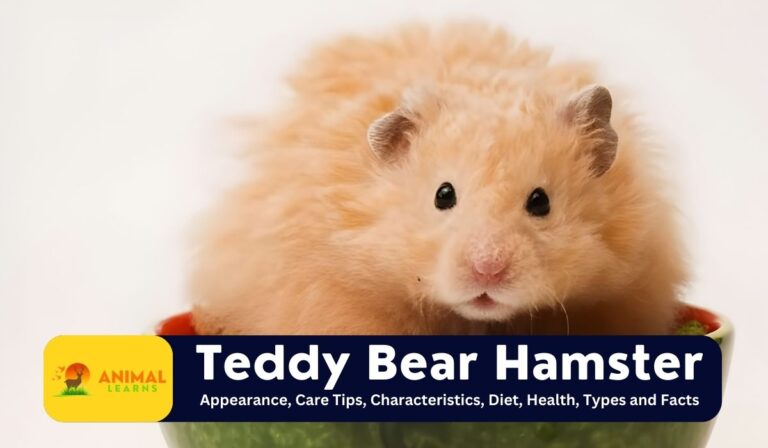Top15 Naturally White Animals in Nature (With Pictures)
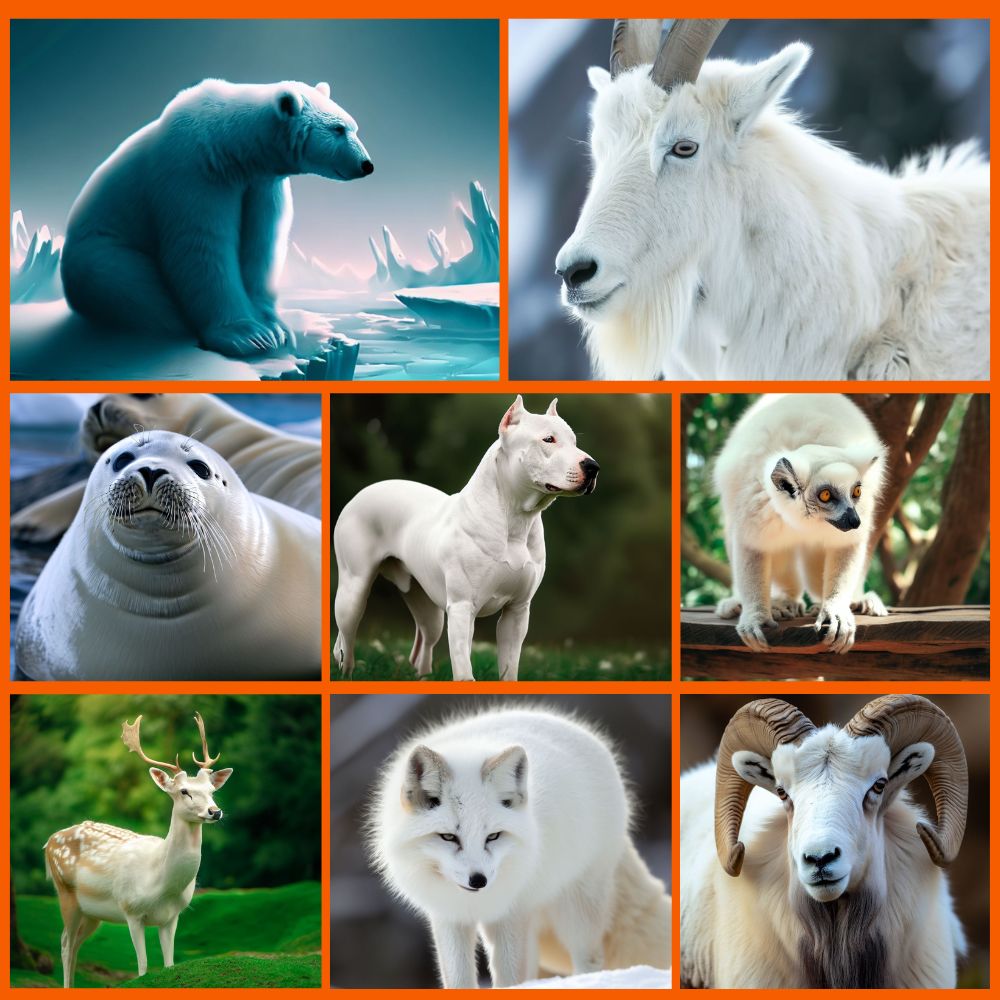
Although there aren’t many naturally white animals, several do have white skin, feathers, or hair. The majority of these creatures inhabit chilly, wintry climates where their white fur serves as a useful disguise. Certain animals use their white fur to conceal themselves from predators, such as the Arctic fox and hare. Some animals, such as polar bears, trick would-be victims by hiding in the surrounding ice.
White is undoubtedly a striking color. It’s also a little unusual to see white animals in the wild because of this. That being said, the white animals you do come across will definitely leave a memorable impression, as you’ll discover in a moment!
Polar Bear
Contents

| Attribute | Measurement |
| Size | 7.25-8 feet (2.2-2.5 meters) |
| Weight | 900-1,600 pounds (410-725 kilograms) |
| Color | Predominantly white with yellowish fur on the neck |
| Group | Mammal, Carnivore |
The Polar Bear is an amazing, visually arresting white creature that has evolved exceptionally well to survive in the severe Arctic climate.
Though we all think of their dense fur as white, it’s actually translucent! It makes it possible for them to disappear into the surrounding snow. They have black skin beneath their fur, which is excellent for absorbing and holding onto heat from the sun.
Arctic Fox
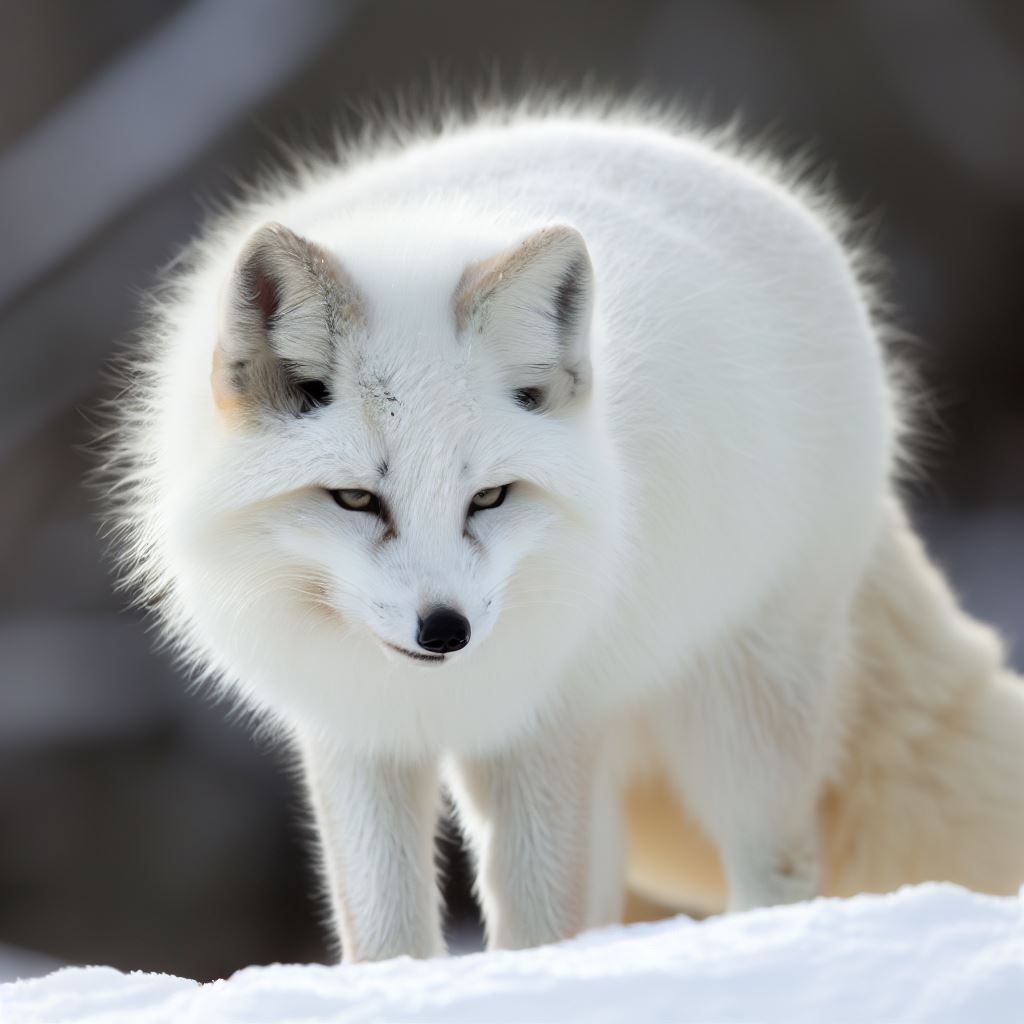
| Attribute | Measurement |
| Size | 18-27 inches (45-68 centimeters) |
| Weight | 6.5-21 pounds (3-9.5 kilograms) |
| Color | White in winter, brownish-gray in summer |
| Group | Mammal, Carnivore |
The Arctic Fox is a small, nimble animal that is indigenous to the Northern Hemisphere’s Arctic areas, where it must endure extremely cold temperatures. Its magnificent, thick, warm coat—which genuinely changes color with the seasons—allows it to achieve that.
Its fur turns a pure white in the winter, making it the ideal disguise against the chilly background. However, we frequently overlook the fact that the coat changes to a brown or gray hue in the warmer months to better blend into the tundra environment.
White Tiger

| Attribute | Measurement |
| Size | 9-12 feet (2.7-3.7 meters) in length |
| Weight | 400-675 pounds (180-306 kilograms) |
| Color | White with black stripes |
| Group | Mammal, Carnivore |
The term “bleached tiger” is occasionally used to describe the white tiger. Since its leucistic gene is recessive, populations that get inbred are more likely to exhibit this color. In order to continue producing white tigers in captivity, breeders frequently resort to inbreeding.
The white tiger is a leucism-affected tiger, not an albino. Due to a hereditary disorder, there is a partial lack of pigment, resulting in a largely white body and stunning crystal blue eyes. The stripes resemble orange tigers’ black stripes.
Beluga Whale
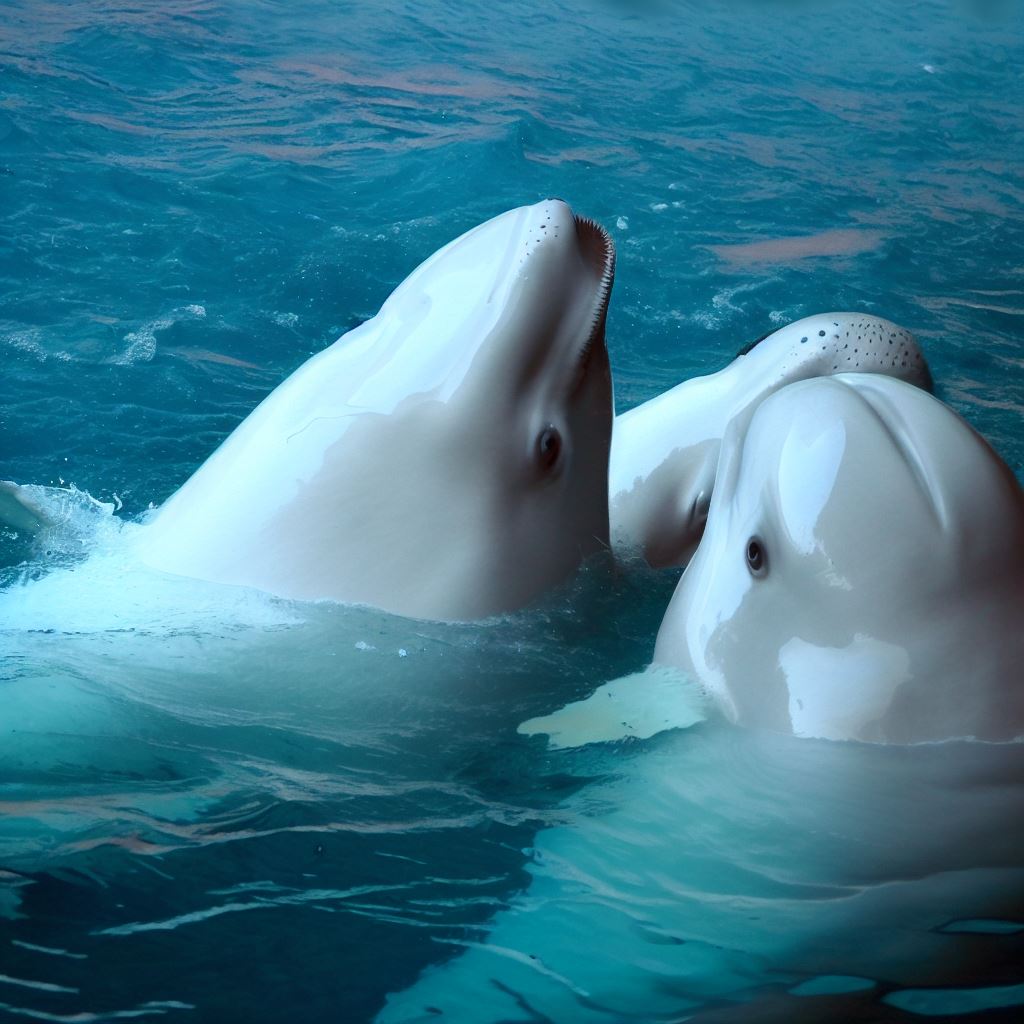
| Attribute | Measurement |
| Size | 13-20 feet (4-6 meters) |
| Weight | 2,000-3,000 pounds (907-1,360 kilograms) |
| Color | White or light gray |
| Group | Mammal, Cetacean |
A remarkable marine mammal, the beluga whale is distinguished by its spherical forehead, or “melon,” in addition to its brilliant white look. They are indigenous to the Arctic and subarctic, where their excellent adaptation to cold water conditions has been developed.
In addition to their adult white coloring, which helps them blend in with the chilly seas they live in, they also have a thick covering of blubber, or fat, which helps protect them from the bitter cold.
Arctic Hare
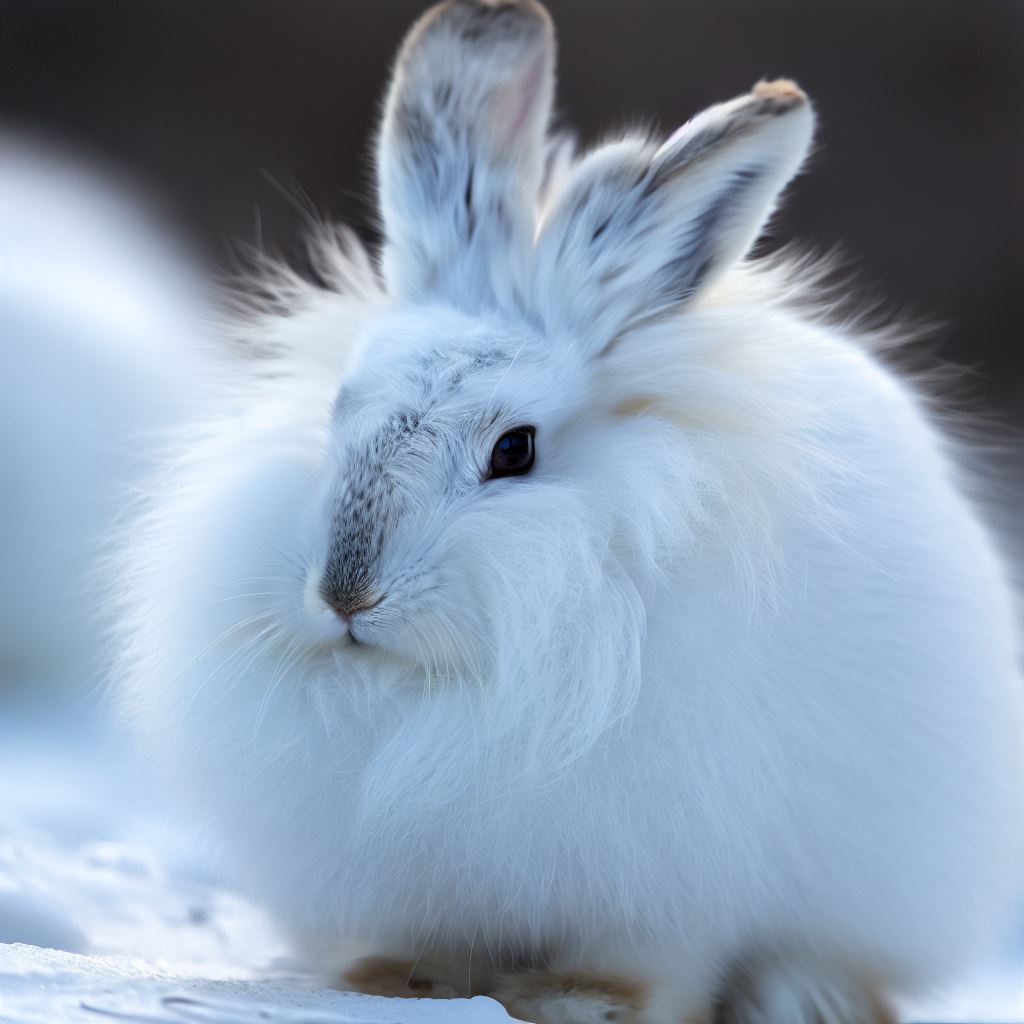
| Attribute | Measurement |
| Size | 19-27 inches (49-69 centimeters) |
| Weight | 6-12 pounds (2.7-5.4 kilograms) |
| Color | White fur all year round |
| Group | Mammal, Lagomorph |
An other amazing species that can survive in the harsh Arctic tundra climate is the Arctic Hare. The Arctic hare, like the Arctic fox, has thick, snow-white fur in the winter that helps it blend in with the landscape. The hare’s fur changes from brown to blue-gray with the seasons, making it perfect for summertime camouflage amidst the rocky landscape.
As herbivores, Arctic hares consume any available vegetation, including grasses, leaves, and flowers in the warmer months and woody plants, mosses, and lichens in the winter.
White Squirrel

| Attribute | Measurement |
| Size | 8-10 inches (20-25 centimeters) |
| Weight | 10-18 ounces (280-510 grams) |
| Color | Completely white fur |
| Group | Mammal, Rodent |
Have you ever seen a white squirrel? These are not albino squirrels, but a rare variation of the common gray squirrel. Their white fur makes them stand out from the crowd, but also makes them more vulnerable to predators. Luckily, these squirrels are smart and adaptable, finding food in forests and cities alike. They eat nuts, seeds, and insects, and store food for the winter.
Dall’s Sheep
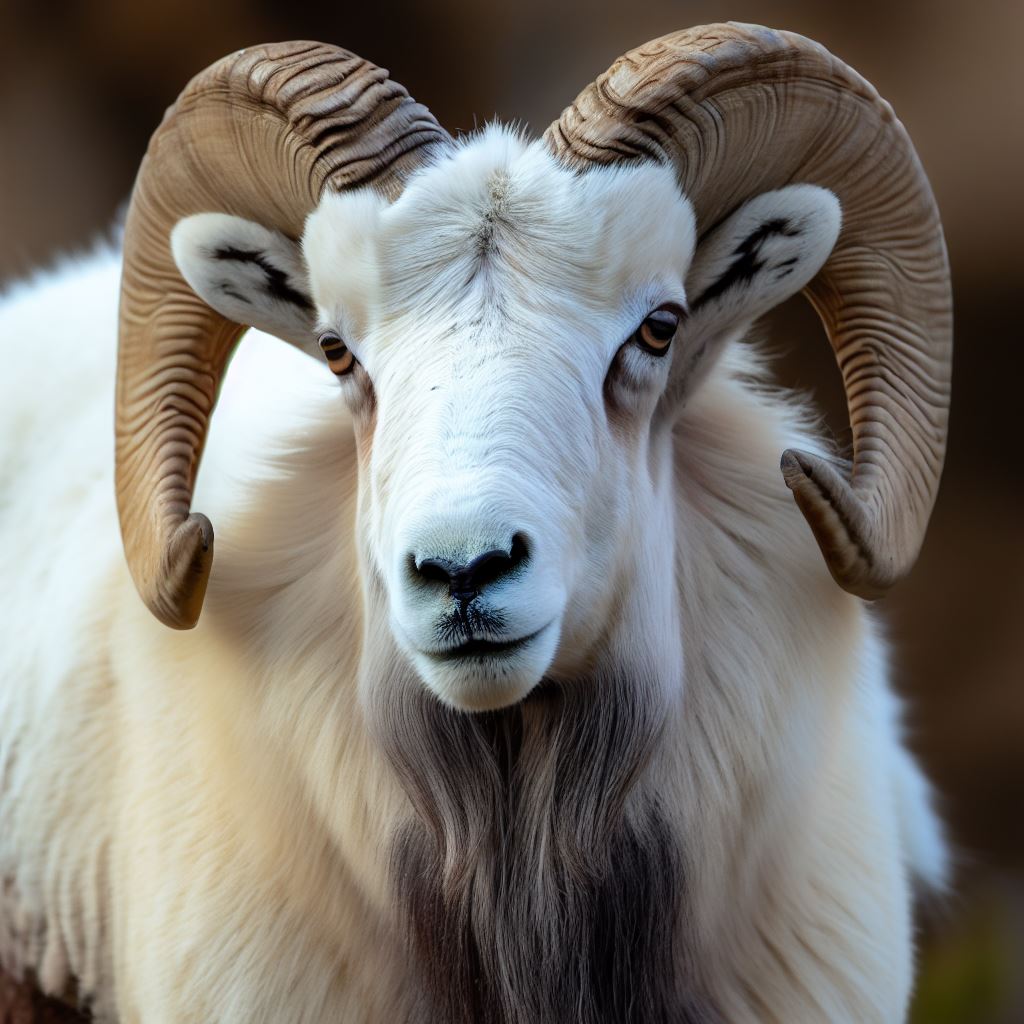
| Attribute | Measurement |
| Size | 3.5-4.5 feet (1.1-1.4 meters) |
| Weight | 160-250 pounds (73-113 kilograms) |
| Color | White fur with curled horns in males |
| Group | Mammal, Ungulate |
Dall’s sheep are the snow-white beauties of the North American mountains. They live in high altitudes, where they can easily navigate the steep and rocky slopes. Both males and females have impressive horns that curve backward, but the males’ horns are much larger and thicker.
These horns are used for fighting and showing off, as the sheep compete for mates and territory. Dall’s sheep feed on grasses and herbs that grow in the alpine regions.
Mountain Goat
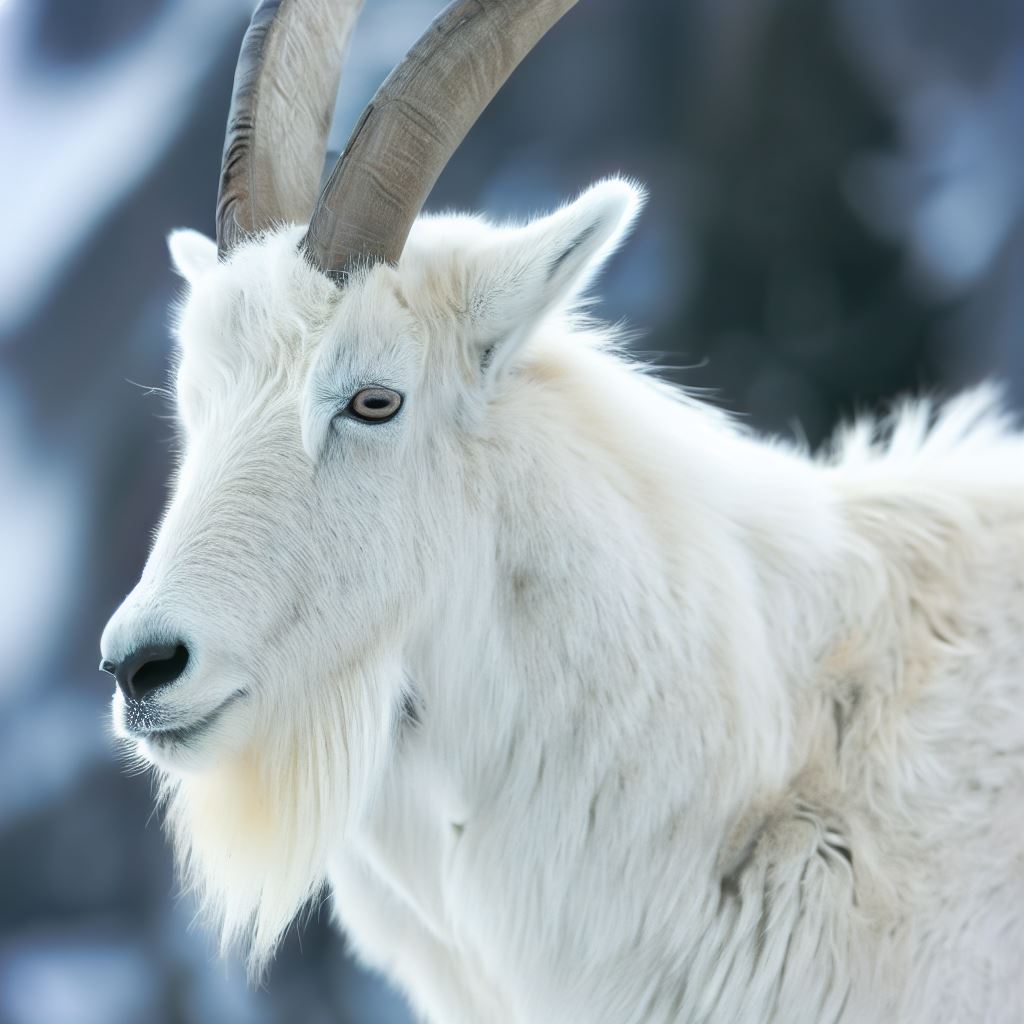
| Attribute | Measurement |
| Size | 47-71 inches (120-180 centimeters) |
| Weight | 100-300 pounds (45-136 kilograms) |
| Color | White fur, black horns |
| Group | Mammal, Ungulate |
Another white animals example is Mountain goat. The thick white coats of these strange animals frequently give them a fluffy appearance. Most of the black horns on men and females are pointed and upright.
The mountain goat, despite its name, is not thought to be a true goat because it does not belong to the Capra genus. Its closest relatives are chamois, which resembles an antelope mixed with a goat, and takins, which resemble wildebeests mixed with goats.
Harp Seal
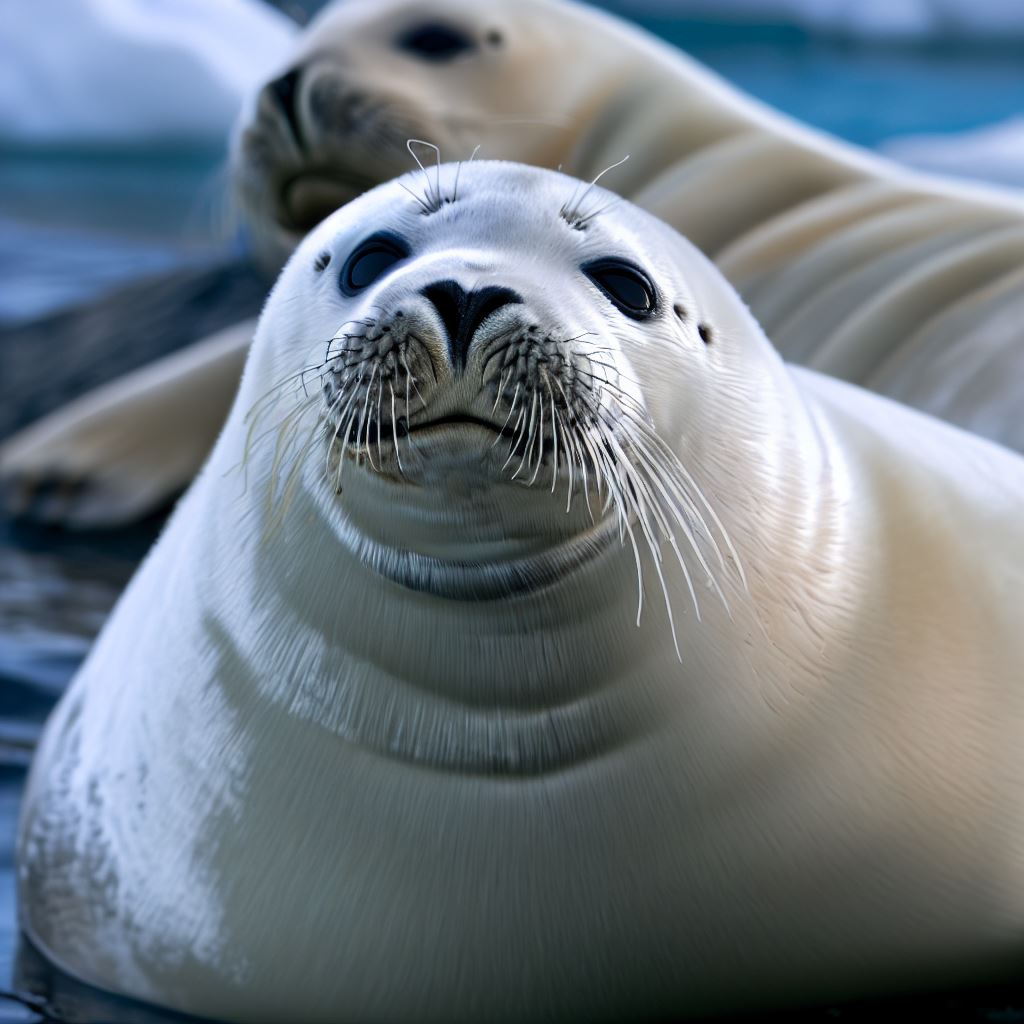
| Attribute | Measurement |
| Size | 4-6 feet (1.2-1.8 meters) |
| Weight | 400-600 pounds (181-272 kilograms) |
| Color | White coat as pups, silver-gray as adults |
| Group | Mammal, Pinniped |
Adult arp seals have a deeper hue. Seal pups, however, have white coats. Until the seal pup molts in two to three weeks, the coats remain a brilliant white color.
Despite not being in danger of becoming extinct, harp seals are heavily harvested. It is hunted both commercially and for subsistence by the Inuit people that live within its range. The main hunting grounds for commercial hunters are Greenland, Norway, Russia, and Canada.
Dumbo Rat

| Attribute | Measurement |
| Size | 9-11 inches (23-28 centimeters) |
| Weight | 200-400 grams |
| Color | White fur with large ears |
| Group | Mammal, Rodent |
The Dumbo rat is available in an extensive array of hues. These are mostly white, with a few having distinctly pink eyes.
The most popular type of rat to keep is this laid-back variety. It is kept as a pet and utilized as a lab rat. Numerous coat styles and colors have been bred into the Dumbo rat breed. It can be found with a “rexed” coat, or a plush coat that is incredibly soft to the touch, similar to several other animals.
White Park Cattle
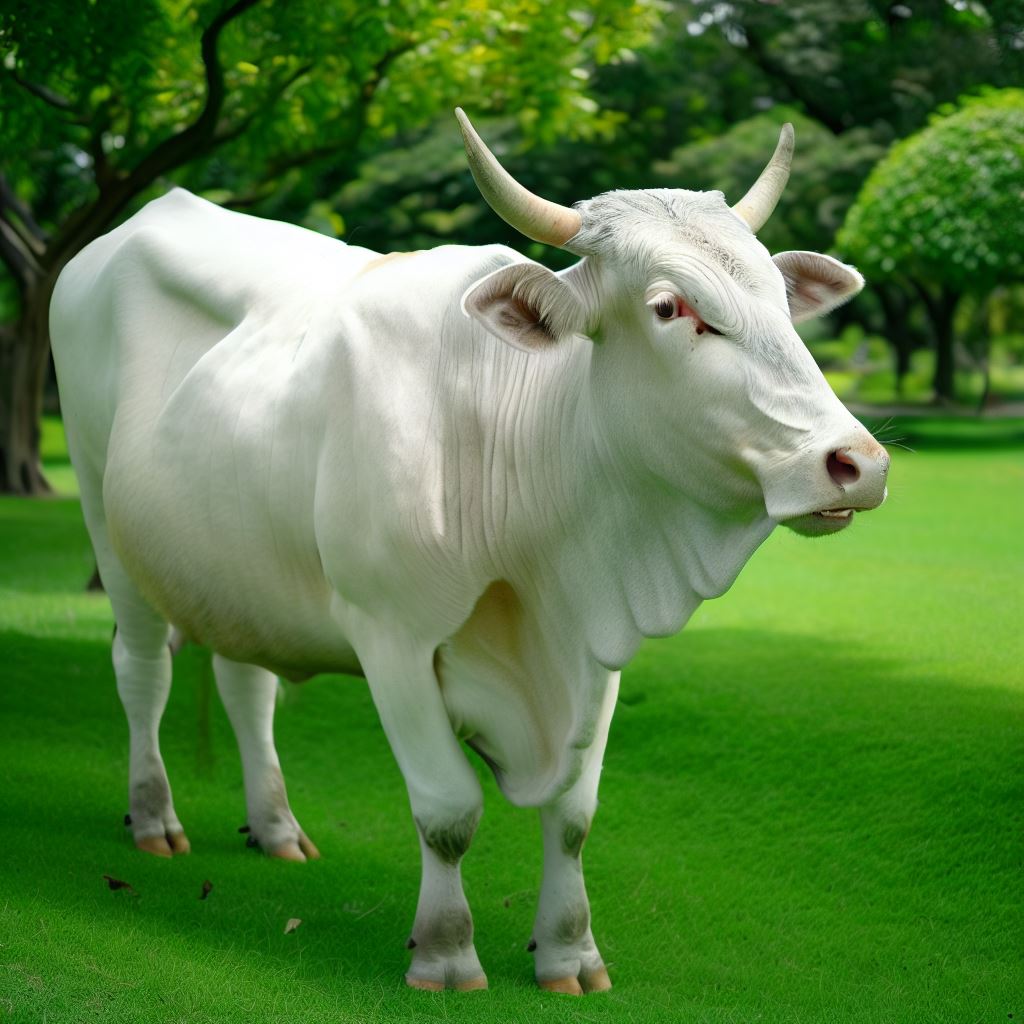
| Attribute | Measurement |
| Size | Varies, typically medium to large |
| Weight | Varies, typically 1,200-2,200 pounds (545-998 kilograms) |
| Color | White with black or red points |
| Group | Mammal, Livestock |
Compared to other cow breeds, the White Park breed has significantly unusual coloring. It has a gentle porcelain white base hue. However, it has point coloring, with either black or red points on the body, unlike many other breeds of cattle.
The present home of this breed is Great Britain, where it originated. Because it was bred and raised for milk, meat, and draught, it has historically been incredibly beneficial. To secure the White Park’s survival, a breeding program has been launched in the UK.
Dogo Argentino

| Attribute | Measurement |
| Size | 24-27 inches (61-69 centimeters) |
| Weight | 80-100 pounds (36-45 kilograms) |
| Color | Predominantly white with patches of black |
| Group | Mammal, Dog |
The coat of this amazing dog is dazzling white and short. Many people’s skin contains a few black patches. Black markings on a coat are regarded as a defect in accordance with breed standards.
The Dogo Argentino is an incredible-looking canine that was bred mostly for wild boar hunting. It has, nevertheless, also been bred to be obedient to its master and protective when needed. Despite its stunning white coloring, it has a genetic connection to deafness. Up to 10 percent of Dogos Argentinos may be deaf in one or both ears.
White Fallow Deer

| Attribute | Measurement |
| Size | 3-3.5 feet (0.9-1.1 meters) at the shoulder |
| Weight | 100-200 pounds (45-91 kilograms) |
| Color | White coat with spots |
| Group | Mammal, Ungulate |
Fallow deer, like other deer species, occasionally come across individuals who are albinos. Even though their antlers are still tan or light brown, these stunning deer are dazzling white to creamy white.
The name of this deer is derived from its normal light brown color. But because of the peculiar shape of its antlers, its name means “shovel deer” in Serbia and Croatia.
White Yak

| Attribute | Measurement |
| Size | 4.6-6.6 feet (1.4-2 meters) at the shoulder |
| Weight | 600-1,000 pounds (272-454 kilograms) |
| Color | White or cream-colored coat |
| Group | Mammal, Bovine |
Yaks are available in several hues. However, as the picture illustrates, occasionally you’ll come upon one whose flowing, silky coat is white!
Yaks are excellent working animals in snowy mountains because of their exceptional cold adaptation. Compared to ordinary cattle, they have larger hearts and lungs and are far more suited to carry oxygen in the blood. They also have an extremely dense layer of subcutaneous fat and nearly no functional sweat glands.
White Lemur

| Attribute | Measurement |
| Size | 13-16 inches (33-41 centimeters) |
| Weight | 1.1-2.4 pounds (0.5-1.1 kilograms) |
| Color | White fur with black face markings |
| Group | Mammal, Primate |
Have you ever seen a lemur with white fur and blue eyes? This is the White Lemur, a fascinating primate that lives only in Madagascar. Their white fur and blue eyes make them look like they belong in a fairy tale, but they are very real and very important to the forest.
They help spread seeds around the forest, which helps the plants grow and thrive. But sadly, the White Lemur is in danger of losing its home, as the forest is being cut down for human use. We need to protect these amazing animals and their island habitat.
White Animals Around the World
A few of the white animals mentioned above have developed camouflage for use in sand or snowy environments. Genetic mutations gave rise to others. And for a few, it’s still unclear where their striking white complexion came from. I hope each and every one of them made your day happier!
FAQs
Are all Animals that are white albino?
No, not all Animals are albino. While some white animals, like albino individuals, lack pigmentation entirely, others have white coloration due to genetic traits or adaptations for their environment.
Why do some animals have white fur or feathers?
White fur or feathers can serve multiple purposes, including camouflage in snowy environments, regulation of body temperature, and as a display of warning or attraction.
Are Animals that are white more endangered than those with other colors?
The color of an animal does not necessarily correlate with its endangered status. Endangerment is primarily driven by factors like habitat loss, pollution, and poaching, rather than coloration.
Are Animals in white are rare?
Although rare in nature, albino animals have been spotted everywhere from the skies to the seas. These unique creatures have a partial or complete loss of pigmentation, hence their pale skin tone compared to other members of their species.
What Animals in white are not albino?
Animals that aren’t albino have natural white coloration, often due to genetic mutations or environmental adaptations. They retain eye pigmentation and possess distinct genetic traits. Examples include polar bears, Arctic foxes, and some domestic animals like white cats and horses.



